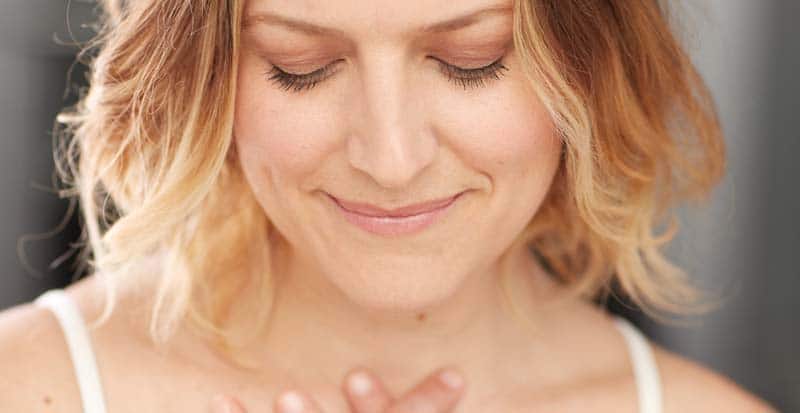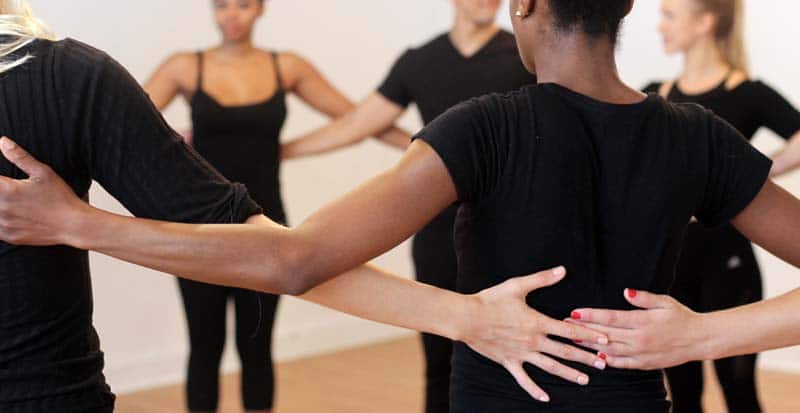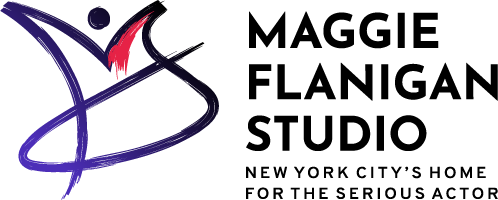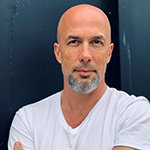APPLY FOR ADMISSION
FIRST YEAR MEISNER ACTING PROGRAM

BEGINS
SEPTEMBER 10TH

Call To Schedule an Interview
(917) 794-3878
How Do You Get Out of Your Own Way?
Briana Packen is one of the faculty members that teaches movement classes for actors at the Maggie Flanigan Studio. Briana explains how actors can shed the physical habits that get in the way when acting.

Briana Packen – Movement Classes for Actors – Maggie Flanigan Studio
How Do You Get Out of Your Own Way?
So many students ask me how to do this. They want to know how to make it something achievable, what the secret is, or the special recipe of warm-ups, exercises, and rituals that make it consistent.
I’m always very frank and honest about it. It’s not something you try to achieve, it’s a choice you make. We all have the capability to get out of our own way at any given moment, but it calls for choosing discomfort over control. And because our bodies are habituated over years of socialization to protect us from physical vulnerability, it takes retraining our knee-jerk, reflexive responses of self-defense.
Making the choice to be vulnerable is choosing to open yourself to be harmed or wounded. Though acting takes place in the imaginary world, our bodies don’t recognize the difference between the simulated emotional vulnerability of a scene or activity and being open to real-world emotional harm. Because of this, the body often tenses up or shuts down the breath and other functions of a released body that allows the actor to take in or “get out of their own way.”
When it’s broken down physically, it is a process that happens subconsciously over time. An actor must first become aware of their individual defensive physical habits before they can eventually learn to let go of those which close them up. Eventually, that actor learns to make a different choice to remain physically open so they “can be done to” in the imaginary world. This is practiced by letting others see you while noticing what’s physically happening in your breath and body to inhibit that process.
In movement, through the use of intimacy exercises, actors get to practice vulnerability first in the presence of another individual who is seeing them without expectations or any agenda so they can breathe through and notice the physical components of tension, release, intensity, discomfort and whatever else may be present. This gives them a safe space to explore being vulnerable so they can begin to identify habits that keep them protected, give those habits permission to exist and continue to stick with staying in a moment of intimacy while telling that habit, “I see you, and it’s alright for me to experience whatever it is I am experiencing.” All this so that eventually, over time, the actor can begin to shed the physical habits that get in their own way when acting.
Often, the transference of these exercises into the acting room isn’t direct. It is more of a continued opening over time because the moment eventually comes when the actor has to make the choice to be vulnerable- or open to being wounded- even when they know the scene or circumstance calls for something that is uncomfortable to live through (i.e heartbreak).
In essence, getting out of your own way is a practice. The practice of making the choice to be open to discomfort. It takes training and continued mental gymnastics to change your mindset to that of being “harmed or wounded” in the imaginary world to that of being safe enough to play full out with yourself. There is no magic, no secret cocktail of stretches or physical activation, it’s a choice. And everyone finds their own ritual of choices that help them mentally and physically prepare their body to be a channel to transmit honest effective behavior. It is a choice to make what you’re doing or who you’re trying to affect more important than any self-consciousness or discomfort. A choice to say yes in every moment. A choice to be so fully involved in a circumstance that your impulses can fire freely into whatever expansive permissive behavior the scene calls for. And you can make that choice at any moment. No matter how far off course your scene or activity may feel, the choice to get out of your own way is always there for you, albeit a brave and often unnerving one.

Movement class with Briana Packen at the Maggie Flanigan Studio 2018
Movement Classes with Briana at the Maggie Flanigan Studio
Learn more about the movement classes and acting programs at the Maggie Flanigan Studio by visiting the acting classes and acting programs page on the website ( https://www.maggieflaniganstudio.com/ ) or by calling the studio to get answers to specific questions about our acting programs. Call (917) 794-3878.
Recent Post
STUDENT TESTIMONIALS
“I was placed in the intense reigns of Charlie Sandlan. I became a better artist, actor, friend, sibling and daughter because of the studio. Even now, I crave the studio every day. What I learned is present in my work every day. I truly believe in everything they stand for.”

“Maggie taught me that I could control my work, my acting, and to throw all of the bullshit out that I had in my head about ‘what I should be doing’ and to just listen and respond honestly, in the moment. She gave me a craft. She is, quite simply put, THE BEST.”

“Maggie Flanigan taught me the true meaning of artistry, passion, and professionalism. I am certain that I continue to work as an actress because of my training with Maggie. At every audition and every performance, her guiding voice is with me. It is a gift beyond measure.”

“Maggie Flanigan is uncompromising, her instincts as a teacher are razor sharp. She doesn’t miss a beat”

“Maggie Flanigan has been one of the most important people in my artistic life. I want to work with Maggie trained actors. As an actor myself, she is my first source. I do not say this lightly, if you are serious about acting, and willing to work very hard, then go to Maggie.”

“Maggie helped me find my sense of truth, an actors greatest asset. Maggie is an expert at instilling that vital ingredient, which allows an actor’s potential to become limitless. My work will forever be rooted in the clarity and honesty she helped me develop.”

“After working for ten years, I did the 2 year program, and now feel that I have the tools I need to become the actor I’ve always dreamed of being. Maggie Flanigan instilled in me a clear sense of truth and a standard of perfection. I am a better actor because of this studio.”

“As an actor, the core of what you have to rely on is your sense of truth and humanity. Maggie allowed me to discover and embrace mine. Trusting my sense of humanity and truth has given me the ability to take risks in my work and my career decisions.”

“Maggie Flanigan has the unique ability to get an actor to the essence of what is true in a moment. She creates a safe and caring environment in which to work.”

“Maggie Flanigan introduced me to my own spirit and my own sense of Truth. Her passion for teaching and ability to communicate are rare gifts to any actor looking for a technique to set his or her talent free. Maggie’s voice has been the one constant guide in my career.”




